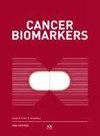The ratio of lymphocyte/red blood cells and platelets/lymphocytes are predictive biomarkers for lymph node metastasis in patients with breast cancer
IF 2.2
4区 医学
Q3 ONCOLOGY
引用次数: 0
Abstract
BACKGROUND: Axillary lymph node metastasis (LNM) affects the progression of breast cancer. However, it is difficult to preoperatively diagnose axillary lymph node status with high sensitivity. Therefore, we hypothesized that platelets/lymphocytes ratio (PLR) and lymphocytes/ red blood cells ratio (LRR) might help in the prognosis of lymph node metastasis in T1-T2 breast cancer. METHODS: 166 patients (Chang Ning Maternity & Infant Health Institute) were included in our study, and the associations of PLR and LPR with lymph node metastasis were investigated. Peripheral blood was collected one week before the surgery, and the patients were divided into different categories based on their PLR and LRR. RESULTS: The incidence of LNM was significantly increased in the high PLR group (p= 0.002) compared with the low PLR group; LNM was also significantly increased in the low LRR group (p= 0.036) compared with the high LPR group. Further, our study revealed that high PLR (p< 0.001, OR = 4.397, 95% CI = 2.005–9.645), low LRR (p= 0.017, OR = 0.336, 95%CI = 0.136–0.825) and high clinical T stage (p< 0.001, OR = 3.929, 95%CI = 1.913–8.071) are independent predictors of LNM. CONCLUSIONS: PLR and LRR could be identified as predictors of LNM in patients with T1/T2 breast cancer.淋巴细胞/红细胞和血小板/淋巴细胞的比率是预测乳腺癌患者淋巴结转移的生物标志物
背景:腋窝淋巴结转移(LNM)会影响乳腺癌的进展。然而,术前诊断腋窝淋巴结状态很难达到高灵敏度。因此,我们假设血小板/淋巴细胞比值(PLR)和淋巴细胞/红细胞比值(LRR)可能有助于T1-T2乳腺癌淋巴结转移的预后。方法:研究纳入了 166 例患者(长宁妇幼保健院),并调查了 PLR 和 LPR 与淋巴结转移的关系。在手术前一周采集外周血,并根据 PLR 和 LRR 将患者分为不同类别。结果:与低 PLR 组相比,高 PLR 组淋巴结转移发生率明显增加(p= 0.002);与高 LPR 组相比,低 LRR 组淋巴结转移发生率也明显增加(p= 0.036)。此外,我们的研究还发现,高 PLR(p< 0.001,OR = 4.397,95%CI = 2.005-9.645)、低 LRR(p= 0.017,OR = 0.336,95%CI = 0.136-0.825)和高临床 T 分期(p< 0.001,OR = 3.929,95%CI = 1.913-8.071)是 LNM 的独立预测因素。结论:PLR和LRR可作为T1/T2乳腺癌患者LNM的预测因子。
本文章由计算机程序翻译,如有差异,请以英文原文为准。
求助全文
约1分钟内获得全文
求助全文
来源期刊

Cancer Biomarkers
ONCOLOGY-
CiteScore
5.20
自引率
3.20%
发文量
195
审稿时长
3 months
期刊介绍:
Concentrating on molecular biomarkers in cancer research, Cancer Biomarkers publishes original research findings (and reviews solicited by the editor) on the subject of the identification of markers associated with the disease processes whether or not they are an integral part of the pathological lesion.
The disease markers may include, but are not limited to, genomic, epigenomic, proteomics, cellular and morphologic, and genetic factors predisposing to the disease or indicating the occurrence of the disease. Manuscripts on these factors or biomarkers, either in altered forms, abnormal concentrations or with abnormal tissue distribution leading to disease causation will be accepted.
 求助内容:
求助内容: 应助结果提醒方式:
应助结果提醒方式:


